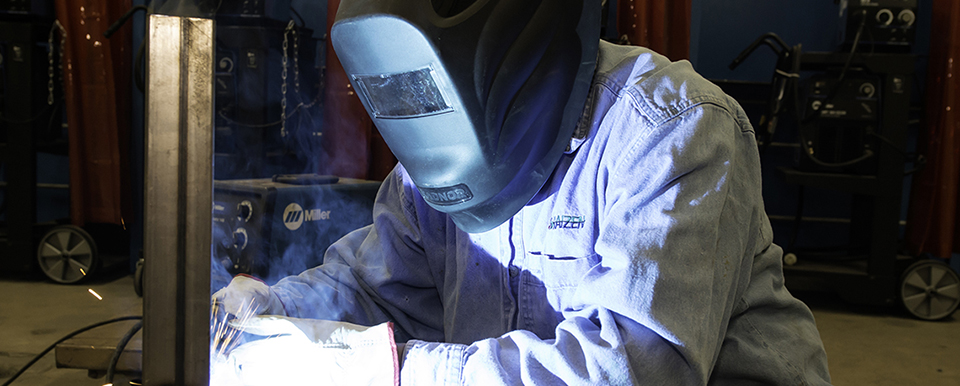Welding

Welding is the most common way of permanently joining metal parts. In this process, heat is applied to metal pieces, melting and fusing them to form a permanent bond. Because of its strength, welding is used in shipbuilding, automobile manufacturing and repair, aerospace applications, and thousands of other manufacturing activities. Welding also is used to join beams in the construction of buildings, bridges, and other structures and to join pipes in pipelines, power plants, and refineries.
Welding Technician I
Introduction to Welding Multiple Processes: basic welding processes, including oxy-fuel welding (OFW) and cutting, shield metal arc welding (SMAW), and gas metal arc welding (GMAW).
Total Program Tuition: $1919.00
*Tuition does not include books or course materials.
Introduction to Pipe Welding
Students will learn to identify pipe cutting and welding processes needed to advance to a career as a Pipe welder. This course will also teach how to weld using various types of welding equipment, set up, and calibrate different welding machines. Students will perform entry-level welding functions.
Total Program Tuition: $789.00
Introduction to Gas Tungsten Arc Welding
In TIG Welding course, students will learn setup and safety use of Gas Tungsten Arc Welding equipment, various joint designs of T-joint and V-groove; basic visual inspection of equipment and welding techniques of metal including aluminum and stainless steel. This course will prepare students for job placement in the welding industry using GTAW techniques as well as prepare students to advance to the Pipe Welding course.
Total Program Tuition: $789.00
Advanced Pipe Welding
The Welding Technology program is designed to offer students the necessary skills for entry level positions in the welding industry. There is an increasing demand for skilled welders in the fields of MIG (Metal Inert Gas), TIG (Tungsten Inert Gas), and Pipe welding.
Total Program Tuition: $789.00
Welding Inspection
The welding inspection offerings at Houston Community College prepare students for entry level careers as welding inspectors. The training is aligned with industry standards and prepare students to take their certification test with the American Welding Society. Students who complete the training are responsible for filling out their certification test application and setting up and taking their certification test outside of the formal training provided in these offerings.
Total Program Tuition: $1,563.00
Industrial Pipefitter
The Industrial Pipefitter program will prepare students for entry level careers as journey workers in screw pipe, socket weld, butt weld, and mechanical joint pipe fabrication. The program will emphasize the National Center for Construction Education & Research Core and Industrial Pipefitter Curriculum.
Total Program Tuition: $1,570.00
Pipefitter Helper
The Industrial Pipefitter helper program will prepare students for entry level careers as helpers in screw pipe, socket weld, butt weld, and mechanical joint pipe fabrication. The program will emphasize the National Center for Construction Education & Research Core and Industrial Pipefitter Curriculum. Students who successfully complete.
Total Program Tuition: $785.00
